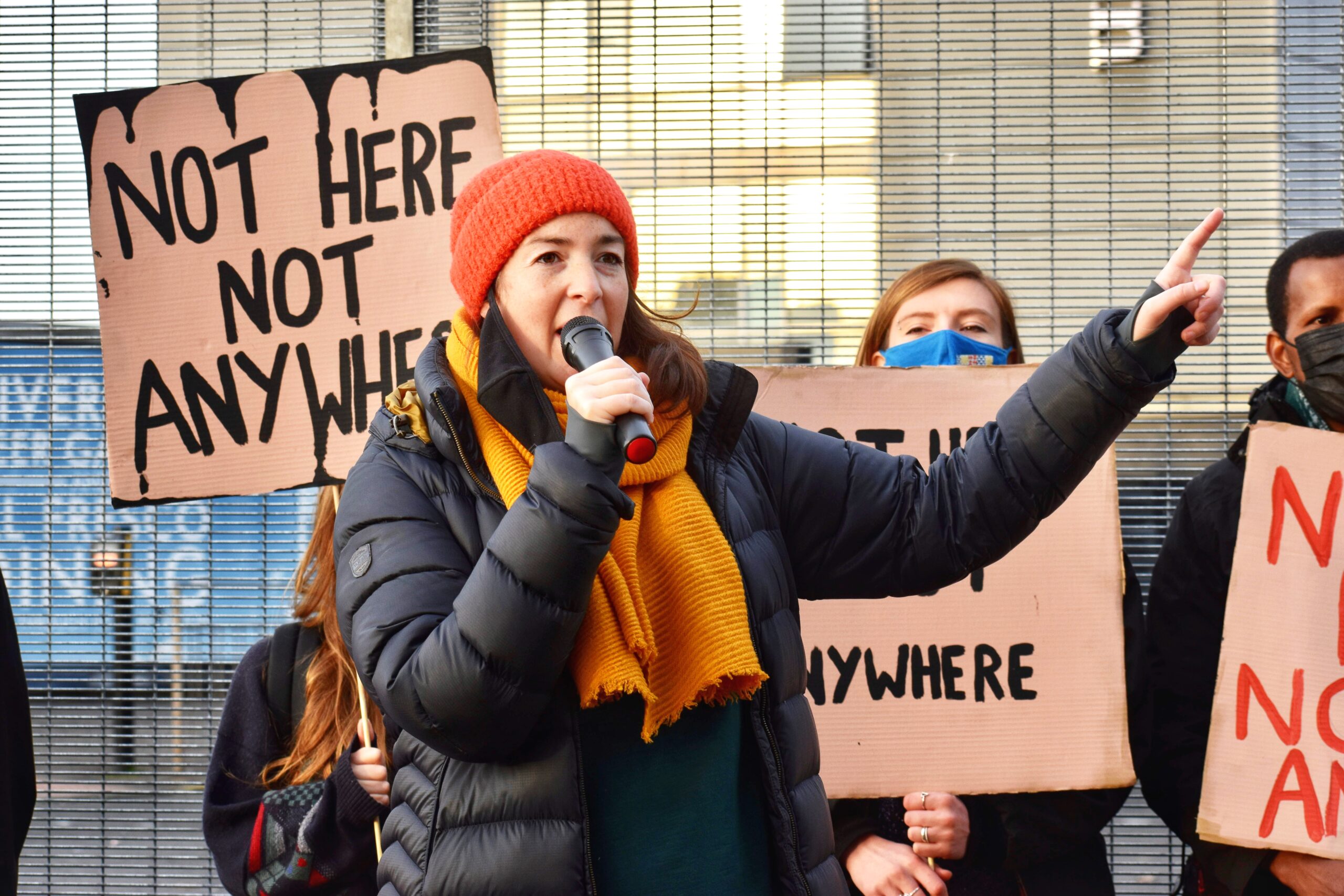
Streets Still Polluted as Scotland will Miss Clean Air Deadline by over a Decade
– Streets in Glasgow, Aberdeen, Edinburgh, Dundee, Perth and Linthligow on track to break legal air pollution limits for 2014.
– Situation not expected to improve as Scotland will miss air pollution legal deadline by over a decade.
Friends of the Earth mid-year analysis of government data shows that air pollution levels in some of Scotland's busiest streets are continuing to damage health and break European air quality laws.(1)
The analysis follows the recent revelation before European judges that Scotland will not meet air pollution limits until 2020 in Edinburgh, Central Scotland and North East Scotland and 2025 in Glasgow. European law requires that legal limits for a key toxic chemical, Nitrogen Dioxide be achieved by 2010. The delays will mean that Scotland will miss the deadline by a decade in most Scottish cities and fifteen years in Glasgow. (2)
Friends of the Earth Scotland Air Pollution campaigner Emilia Hanna said,
“A number of busy streets are recording high levels of pollution and are on track to break legal limits for 2014. It is disappointing to see continued high levels, especially because Scotland and the UK have been called up by European Courts for its slow progress on cleaning up the air.”
“The law required Scotland to have clean air by 2010. These delays see the prospect of clean air slipping over the horizon for people living in Scottish towns and cities. It is unbelievable that we will have to wait another six years for clean air in Edinburgh and even worse that we have to wait until 2025 for clean air in Glasgow. These delays mean there is no end in sight for the thousands of Scots who suffer from air pollution.
“Air pollution aggravates asthma, and can cause heart disease, strokes, and lung cancer. We know that over 2000 Scots die from the effects of air pollution each year, so these delays in meeting clean air standards mean even more unnecessary death and suffering. (3)
“Scotland is breaking European laws on air pollution. Under EU rules, Europe could eventually impose hefty fines on the UK and Scotland if it fails to clean up its act. The public should not have to cough up the money to pay for the government’s continued inaction. The public may have to pay out twice for air pollution, once for health care of those affected and then again through EU fines due to government's failure to act.
“The Scottish Government has thus far proved itself unwilling to take the steps necessary to tackle this public health crisis. It has hoping for improvements in vehicle technology to solve the problem but it should be proactive in cutting traffic levels by halting new unnecessary road developments, investing more in walking and cycling, and improving public transport.
“The health impacts of air pollution are clear, the Government's strategy is not. For the sake of people's lives and wellbeing, air pollution needs to be tackled as an urgent priority. We cannot afford to wait any longer.”
Results of 2014 Mid-year round-up:
Top 12 most polluted streets for a key pollutant, Nitrogen Dioxide, so far in 2014. Figures in microgrammes per cubic metre, European legal limit 40 (annual mean)
Glasgow Hope Street, 66
Dundee Seagate, 59
Edinburgh St John's Road, 57
Glasgow Byres Road, 54
West Lothian Linlithgow High Street, 48
Dundee Lochee Road, 46
Edinburgh Queensferry Road, 46
Aberdeen Union Street, 46
Perth Atholl Street, 45
Dundee Meadowside, 45
Aberdeen Market Street , 44
Dundee Whitehall Street, 42
ENDS
Notes to Editors
1) Our analysis looked at average trends for Nitrogen Dioxide levels from 1st January 2014 to 17th July 2014, using provisional data of all the Automatic Monitoring Stations around Scotland. The results will change over the course of 2014 and after the data is officially ratified. The list has been compiled based on information from the Government’s Scottish Air Quality Website (www.scottishairquality.co.uk) and correspondence with Ricardo AEA, the air quality consultancy that maintains the site. The monitors were a combination of roadside and kerbside monitors. It should be noted that at kerbside sites and some roadside sites, exposure levels may be higher than levels to which people are regularly exposed. For example, Glasgow Hope Street is a Kerbside site, and the nearest relevant exposure is bars and cafes set back approximately 5m from the Kerb. Queensferry Road is a roadside site, with nearest relevant exposure a property at approximately 10m from the monitoring station.
(2) The new projections from Defra are here: http://uk-air.defra.gov.uk/assets/documents/no2ten/140708_N02_projection_tables_FINAL.pdf. The previous predictions are here: http://uk-air.defra.gov.uk/assets/documents/no2ten/110921_UK_overview_document.pdf
(3) ““Shocking death toll from air pollution at local level revealed”, Friends of the Earth Scotland press release, April 2014 http://www.foe-scotland.org.uk/node/1821 summarises Health Protection England figures which show that over 2000 deaths across Scotland are linked to air pollution including 300 people in Glasgow and over 200 in Edinburgh.
Public Health England’s research is available at http://www.hpa.org.uk/webc/HPAwebFile/HPAweb_C/1317141074607. The Scottish figures are in Table 3.
(4) FoE recently criticised the Commonwealth Games organisers for failing to deliver on promises on air pollution: http://www.foe-scotland.org.uk/node/1856
(5) Friends of the Earth Scotland is:
Scotland's leading environmental campaigning organisation
An independent Scottish charity with a network of thousands of supporters and active local groups across Scotland
Part of the largest grassroots environmental network in the world, uniting over 2 million supporters, 77 national member groups, and some 5,000 local activist groups.
www.foe-scotland.org.uk
